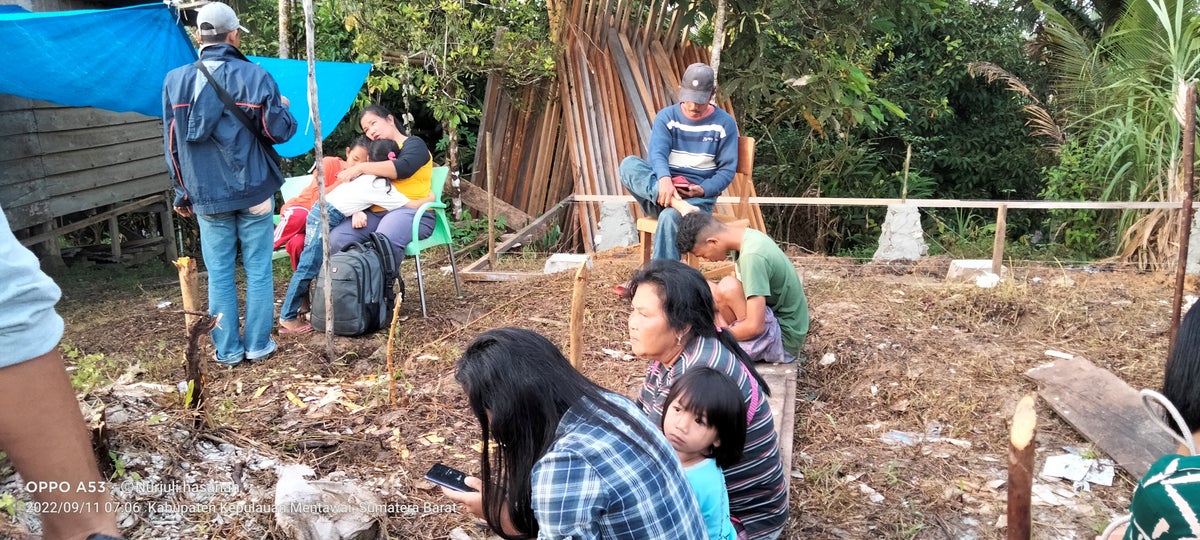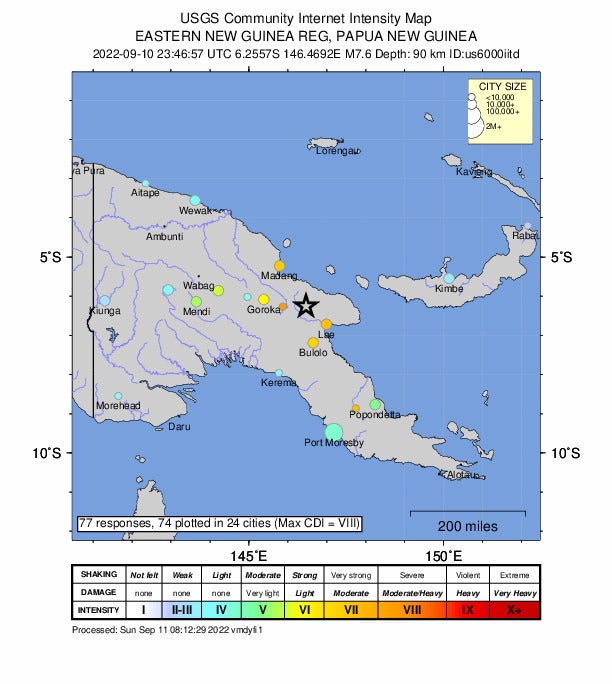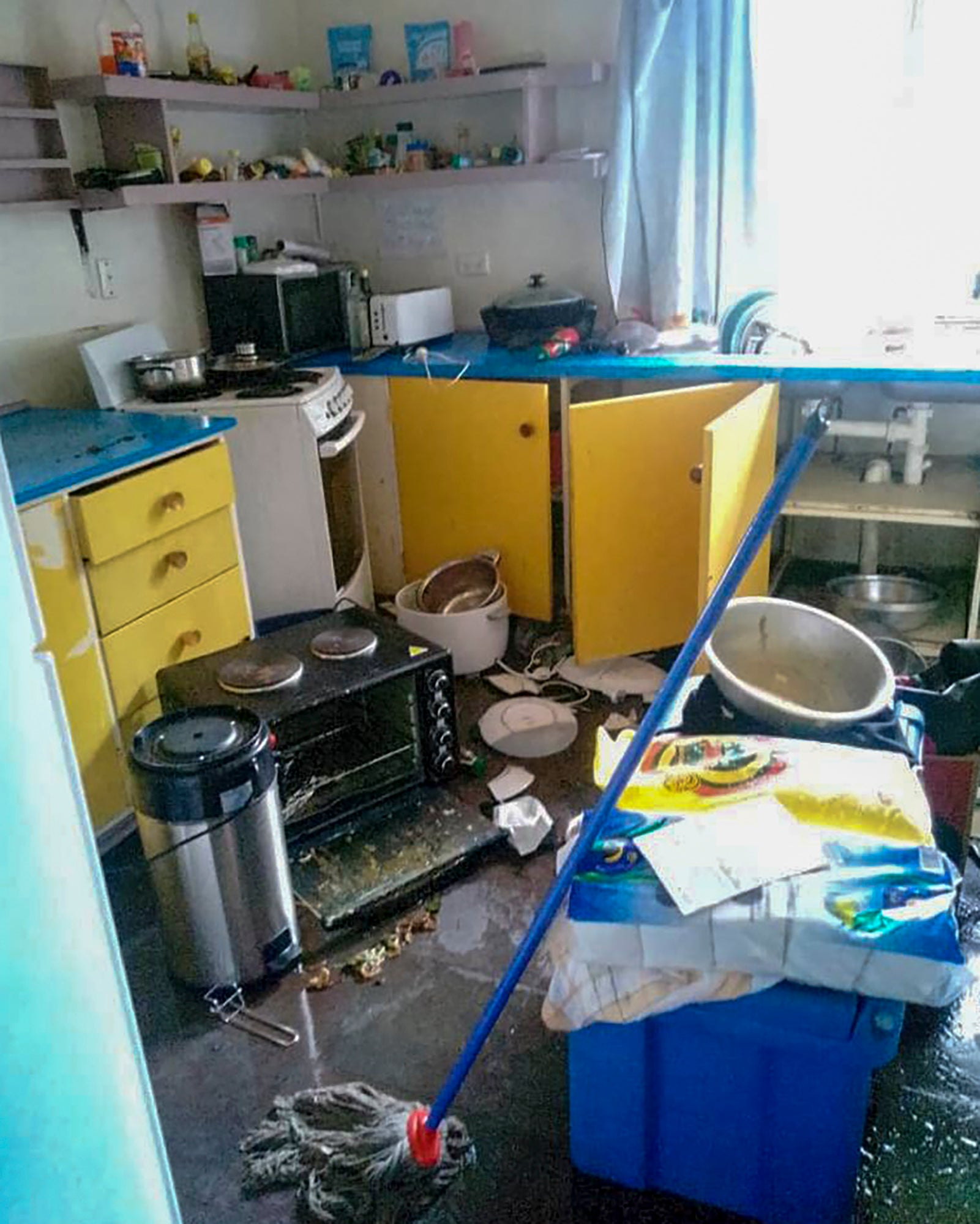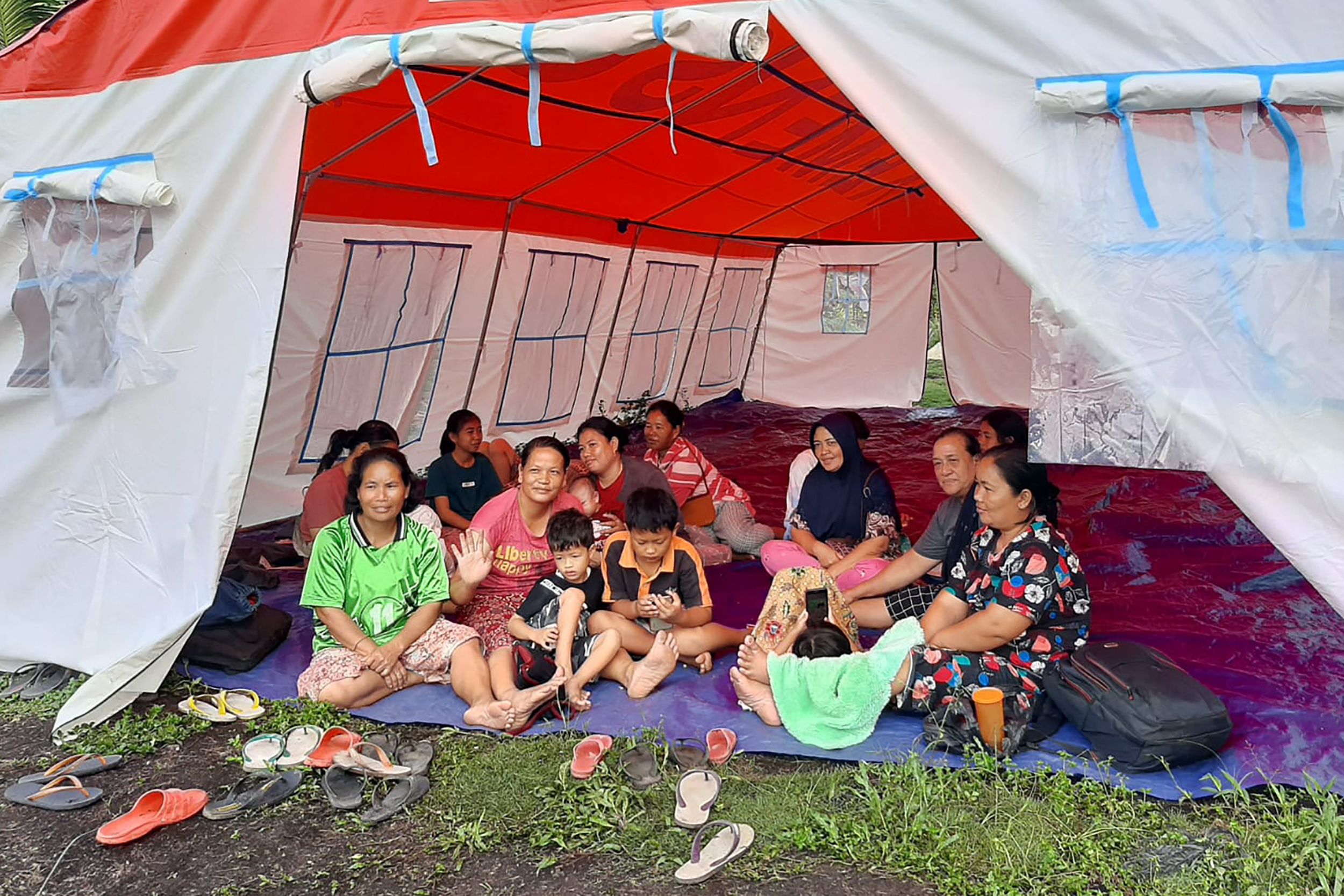
Earthquakes of magnitude 7.6 and 6.1 struck Papua New Guinea and Indonesia on Sunday.
In Papua New Guinea, the quake hit at 6.46am around 67km east of Kainantu, a sparesly populated area, killing at least three, reported the Associated Press.
The earthquake depth was registered at around 50-60km.
Those killed in the Pacific nation died in a landslide in the gold-mining town of Wau, the agency reported, citing Morobe provincial disaster director Charley Masange.
Other people were injured by falling structures or debris and there was damage to some health centres, homes, rural roads and highways, he said, adding it could take some time to assess the full extent of injuries and damage.
Indonesia’s Mentawai Island, located off the western coast of Sumatra island, recorded a quake with a depth of 40km.
The extent of the damage is unclear at the moment. No casualties have so far been reported from the quake in Indonesia.
The US tsunami warning system issued a warning, but later added that the threat had passed. There was no immediate tsunami threat to Australia, said the Bureau of Meteorology.

The latest tremors come a day after a series of strong inland earthquakes had shaken Indonesia’s West Papua province with at least four between 6.2 and 5.5 magnitudes recorded on Saturday.
Located on the eastern half of the island of New Guinea to the east of Indonesia and north of eastern Australia, Papua New Guinea sits on the Pacific Ring of Fire, the arc of seismic faults around the Pacific Ocean where much of the world’s earthquakes and volcanic activity occurs.
Describing the tremors, Renagi Ravu, a Papua New Guinea resident said he was meeting two colleagues in the morning when the quake struck.

He tried to stand up from his chair but couldn’t maintain his balance and ended up in a kind of a group hug with colleagues, while plates and cups crashed to the ground.
His children, aged nine and two, had their drinks and breakfast spill over.
Also a geologist, Mr Ravu said he tried to calm everyone down as the shaking continued for more than a minute.
Apart from the deaths, the extent of damage from the quake in the Pacific nation was not immediately clear either.
Mr Ravu said earthquakes are “common” in Wau, the closest town to the epicentre.

“But it usually doesn’t last as long and is not as violent as this one," he added.
With a population, of 10,000 along with a scattered settlement in the highlands, he suspects more people might have been affected. “It was quite intense,” he said.
Among the damage to his property included a broken sewer pipe, he said, adding that his friends also shared images of cracked roads, broken pipes and falen debris.

“They are starting to clean up their houses and the streets,” he said. Communication seems to have been affected, he added, with some cell towers likely to have fallen.
Some people also shared images and videos of items falling off supermarket shelves.
Earlier in 2018, about 125 people died following a 7.5 magnitude quake in the region, while in Indonesia, about 25 people were killed earlier in February this year, following a 6.2 magnitude quake.
Additional reporting from wires







